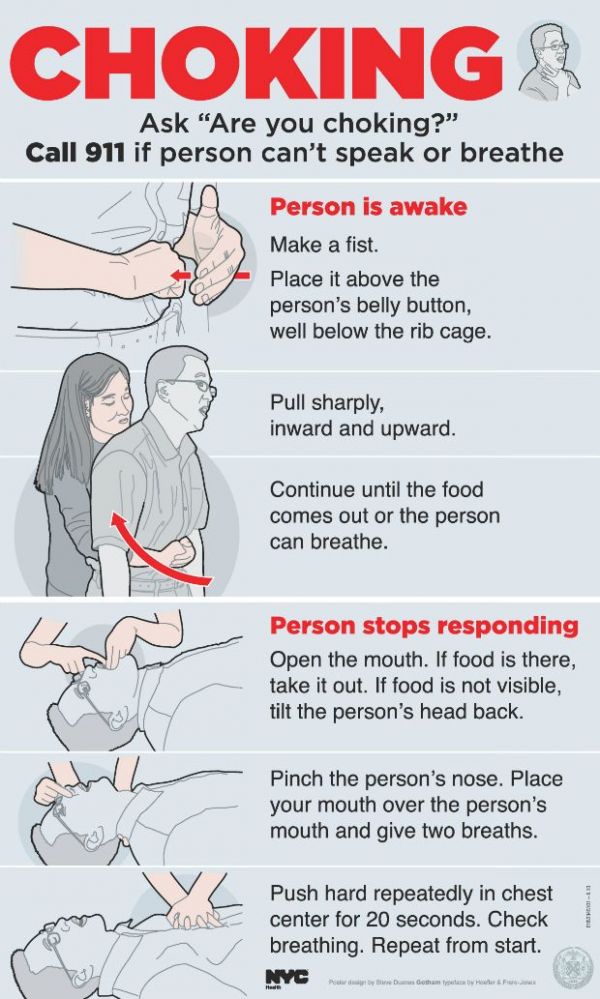How to Help Someone Who is Choking
Fortunately, dealing with many forms of blockage that cause choking can be removed naturally by the body with minimal assistance. Techniques such as the Heimlich maneuver or back-patting require minimal skill and practice. The real trick is to accurately determine what assistance a victim needs, provide it, and ensure that the victim has access to more intensive care if necessary. Let’s take a look at the basics so that you will know what to do in case you encounter someone who is choking.
Assess
The first step is to assess to see if there is indeed a problem. If the victim is coughing and breathing, then it is unlikely that they are literally choking and require intervention. We’ve all been through bouts of uncontrollable coughing from something that went “down the wrong pipe” at some point, so we shouldn’t panic if we see this happen to someone else.
The usual first sign of choking is gasping followed by the victim placing their hands around their throat or gesturing towards the area. This usually coincides with a panicked expression or changes in facial color and levels of consciousness. Keep in mind that someone can go from perfectly healthy to weakened from an obstructed airway in a matter of seconds, and signs are fairly obvious to detect.
Apply Appropriate Treatment
Once you have determined that the patient is indeed choking, it’s time to employ one of the three main techniques for the removal of obstructions. First is the Heimlich maneuver, and it is very simple. Stand behind the victim and wrap your arms around their abdomen just above the rib cage. Make a fist with your dominant hand, holding the thumb inwards. Hold the fist with your non-dominant hand just above the belly button. Thrust in an upward/inward angular motion rapidly. Be firm and assertive and look for signs that items are becoming dislodged. Adjust the strength of the pushes as necessary. This will remove or loosen the majority of blockages that are associated with food or the swallowing of smaller items.
Another option is to pat the back almost as if you were burping a baby. This can work on conscious or unconscious patients, from infants to adults. Position the victim over your non-dominant arm so that their torso is resting perpendicular to their legs. You can also increase their angle downward to promote faster expectoration if you can safely support their weight. Take the palm of your dominant hand and pat their back near the bottom of their shoulder blades. You should be able to slap out the blockage. Sometimes you can slap in an angular direction going up as well.
Finally, you can also press their upper chest over the rib cage if the patient is unconscious and lying on the ground. These resemble CPR chest compressions, but they are intended to be angled up and in instead of straight down.
You can also feel within the mouth of the victim for loose items and remove obstructions whenever possible. However, you don’t want to go beyond the oral cavity because of the risk of causing the obstruction to become further lodged within the throat or airway.
You also want to call 911 immediately whenever possible in order to have emergency services on the way as you begin to intervene. This will minimize the amount of time that the patient has to wait for advanced medical care if necessary.
Keep in mind that these methods are intended to provide a first-responder level of care, and success will vary based on the unique circumstances surrounding the emergency. Never delay access to comprehensive care unless there are no other options. However, being able to intervene during a choking incident can and does save lives every day. Learn this skill and arm yourself with a tool that can ultimately save a life as well.
More Articles From This SIte
Pages:
- 1
- 2















